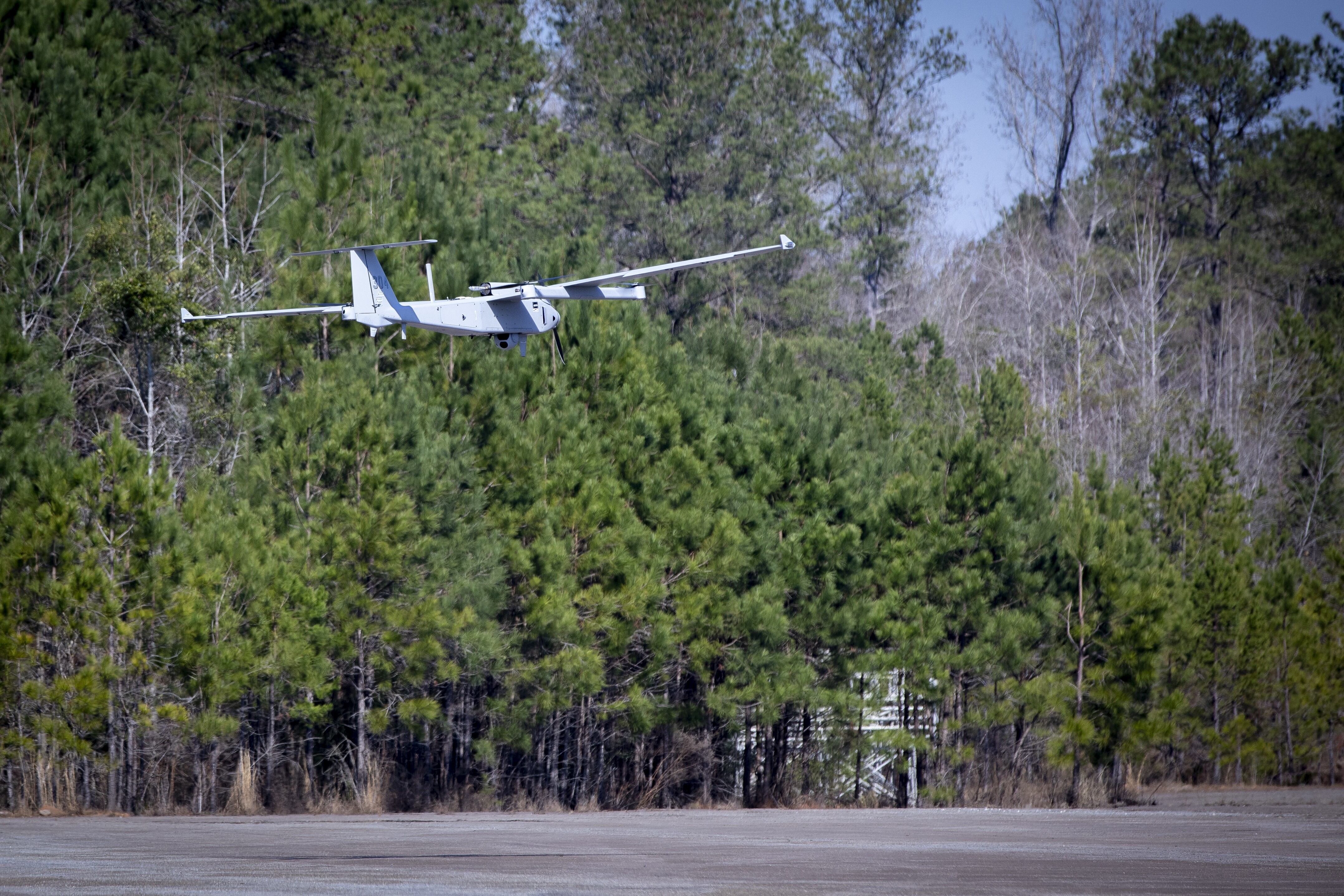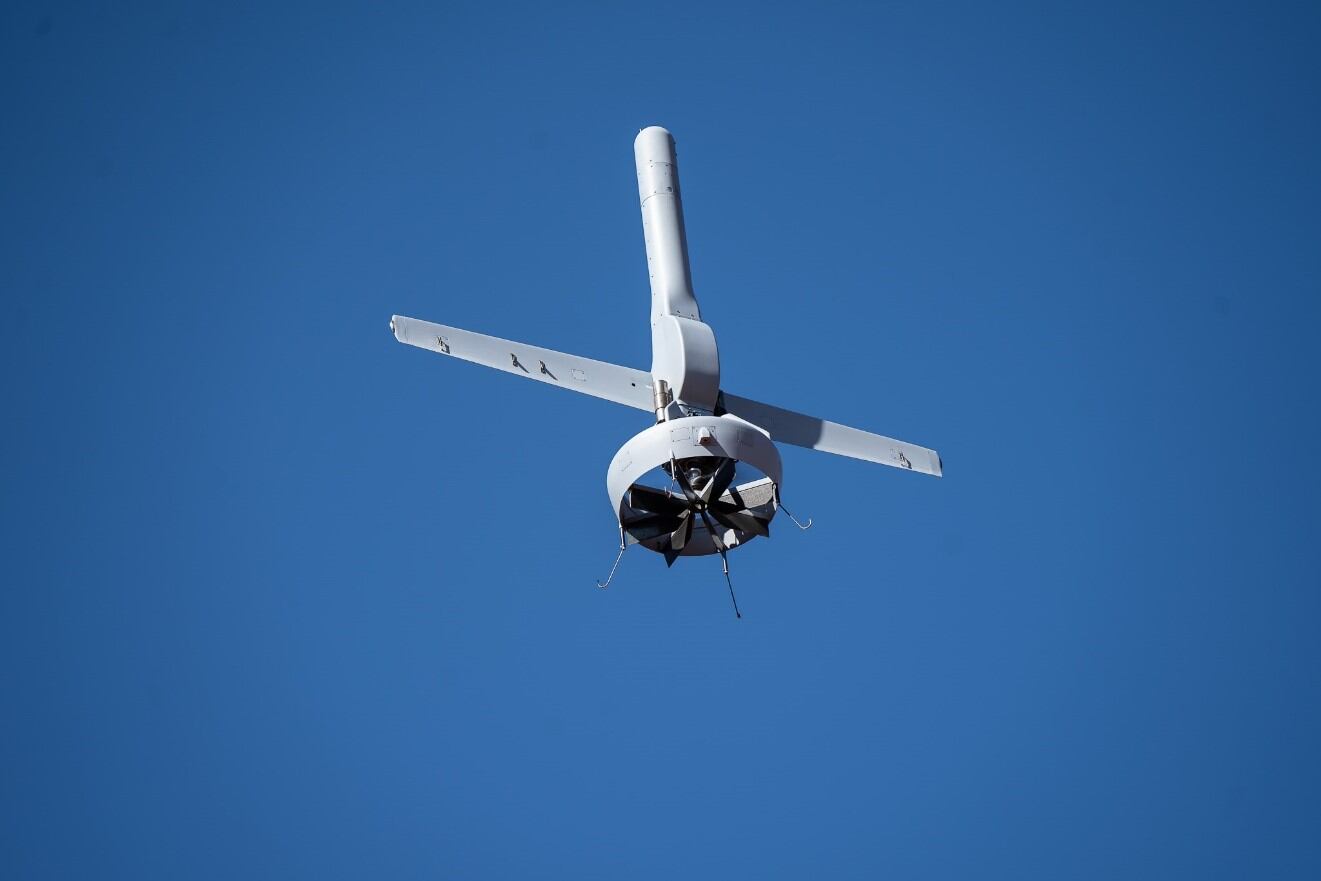
WASHINGTON — The U.S. Army is poised to launch a competitive prototyping effort for a tactical drone after selecting AeroVironment’s Jump 20 earlier this year as an interim option. And according to Army aviation leaders, the pool of competitors appears significantly larger than when competition began in 2019.
In 2018, the Army began considering requirements for a replacement for the Textron-made Shadow drone. The aircraft is widely used, but is one of the most accident-prone unmanned aerial systems in the service’s inventory. It is also difficult to deploy and has a loud engine, allowing for easy detection.
By 2019, the service narrowed the pool of competitors to two: a Martin UAV-Northrop Grumman team and Textron Systems’ AAI. Martin UAV supplied its V-Bat system, while Textron offered its Aerosonde HQ.
Shortly after, the Army added two more aircraft for evaluation: L3Harris Technologies’ FVR-90 and Arcturus UAV’s Jump 20. In 2021, AeroVironment acquired Arcturus for $405 million.
For about a year, operational units evaluated the four different tactical drones, culminating in a rodeo in spring 2021 at Fort Benning, Georgia.
Two units received Arcturus’ offering, while the other systems went to one unit each. That approach was based on the number of systems readily available and the service’s desire to get platforms to five units.

At the Fort Benning rodeo, all five units tried each offering to compare them.
“Although the demonstrations were a critical portion of that to inform the requirements, they weren’t necessarily going to be used as source selection,” Maj. Gen. Robert Barrie, the Army’s program executive officer for aviation, told Defense News in a recent interview.
Demonstrations wrapped up in the first half of 2021, but it took until August 2022 for the Army to select one company to build an initial tranche of systems. The service was working through requirements, an acquisition strategy and waiting for congressionally approved funding.
The Army in August awarded AeroVironment an $8 million contract to pay for one Future Tactical Unmanned Aircraft System, which includes six air vehicles, ground data terminals and ground control stations. The system will go to a single brigade combat team.
“Increment 1 ... really represents the current state of industry regarding performance capabilities that are going to get us rapidly deployable, runway independent, expeditionary, [a] vertical takeoff [capability],” Barrie said ahead of the Association of the U.S. Army’s annual conference. “Increment 1 allows us to field a capability today that’s available.”
Increment 2, in which the Army prepares for a competitive prototyping phase, “builds on that with all of those current demonstrated capabilities, [but] it’s going to increase range, [and] it’s going to incorporate a scalable control interface, which [gives] the ability for multiple soldiers in multiple places to be able to control an Increment 2,” Barrie said.
The second increment should also offer upgraded sensor capability — “specifically an enhanced laser designator,” he added. The system is expected to offer more interoperability through manned-unmanned teaming, for example, and provide an improved controller interface.
Additionally, he noted, the second increment must enable organic maintenance of the system so the Army can “break ourselves of contractor logistics support.”
Following the Increment 2 competitive process, which will involve multiple vendors, the Army plans to choose a winner and buy its system in larger quantities than in Increment 1.
“It will be an incremental downselect [process] to maximize all of the competition,” Barrie said.
Maj. Gen. Walter Rugen, who manages the Army’s future vertical lift technology development, said five units went through one of the longest soldier evaluations the Army has ever done, and by the end were “pretty much demanding that technology.”
Because of that demand, the Army decided to progress in an incremental fashion, providing a unit immediate capability, but then competing to pursue what the service considers to be a truly “transformational capability,” Rugen said.
The incremental approach and a competition for a second increment are meant to help the Army get the best value for the best capability, according to Barrie.
“One could argue: ‘OK, [AeroVironment] won … therefore they have a leg up.’ The other side is, we have well understood costs and capabilities and limitations with those systems,” Barrie added. “So as we go into a competitive environment, we will know very well what their system can do, and we’ll be able to compare it against other systems.”
Asked whether to expect more industry participation this time around, Barrie said: “100%, yes. In fact, I know we have a bigger pool.”
He wouldn’t provide a specific timeline on the Increment 2 prototyping effort, but said decisions will come in fiscal 2023.
According to FY23 Army budget documents, the service plans to enter FTUAS Increment 2 competitive prototyping in the first quarter of FY23 and wrap it up in the first quarter of FY25. The Army is slated to make a rapid fielding decision in the second quarter of FY25 and to hold an operational evaluation in the third quarter of FY25. The system is planned to then enter full-rate production in the second quarter of FY26.
Jen Judson is an award-winning journalist covering land warfare for Defense News. She has also worked for Politico and Inside Defense. She holds a Master of Science degree in journalism from Boston University and a Bachelor of Arts degree from Kenyon College.




